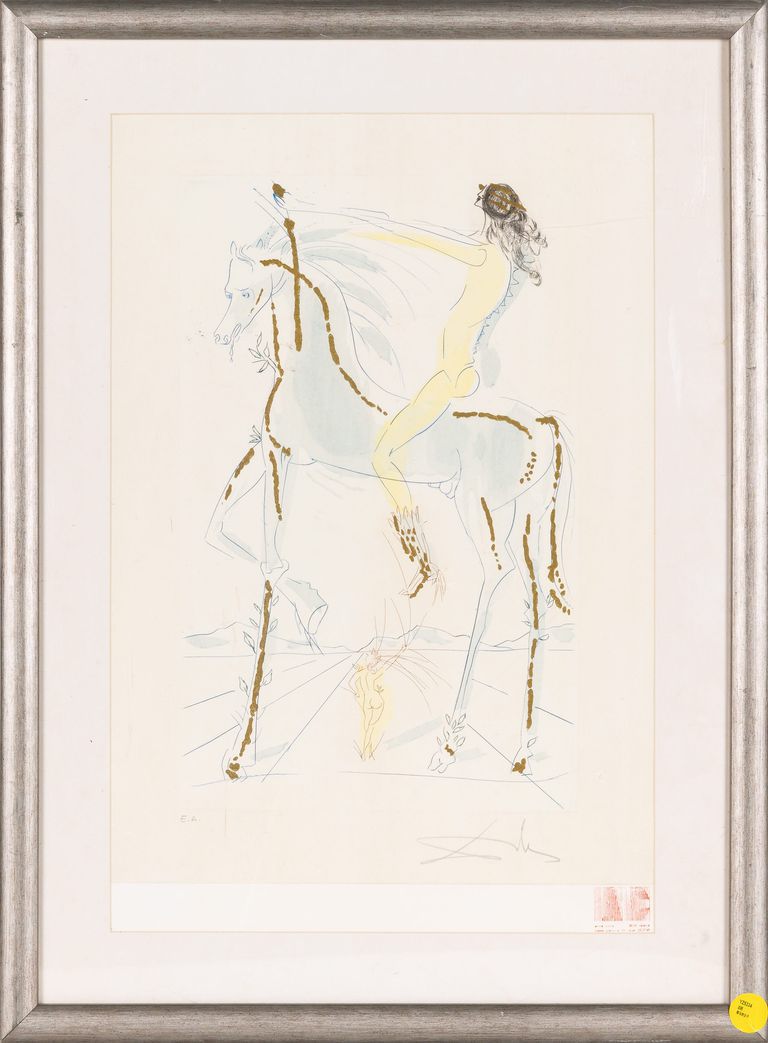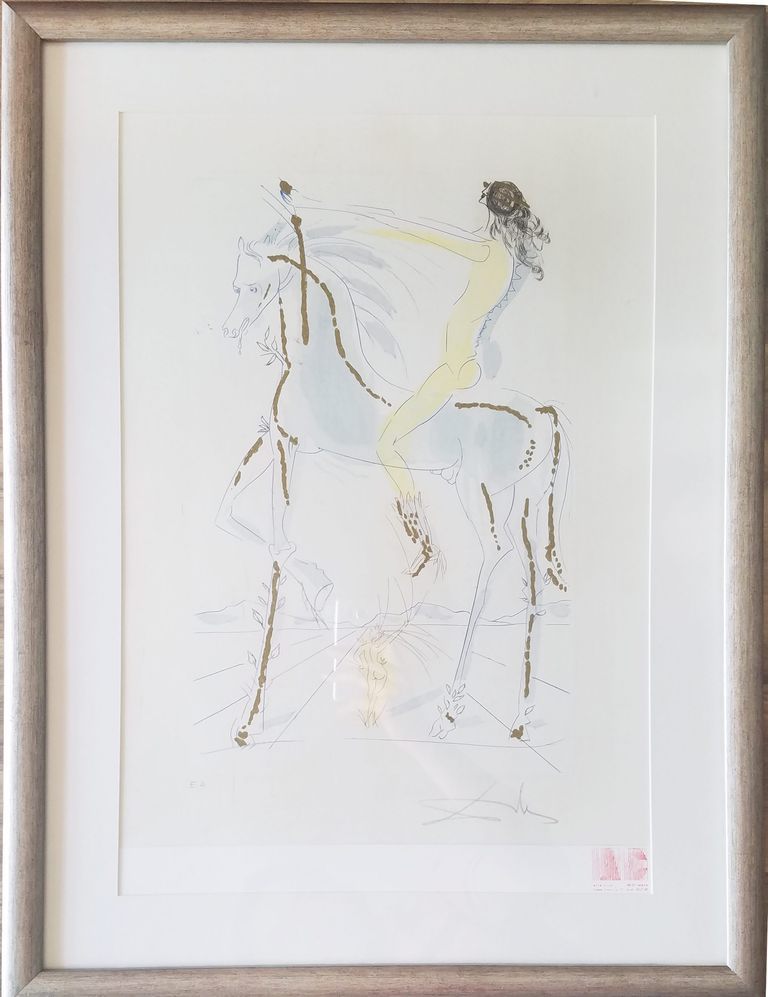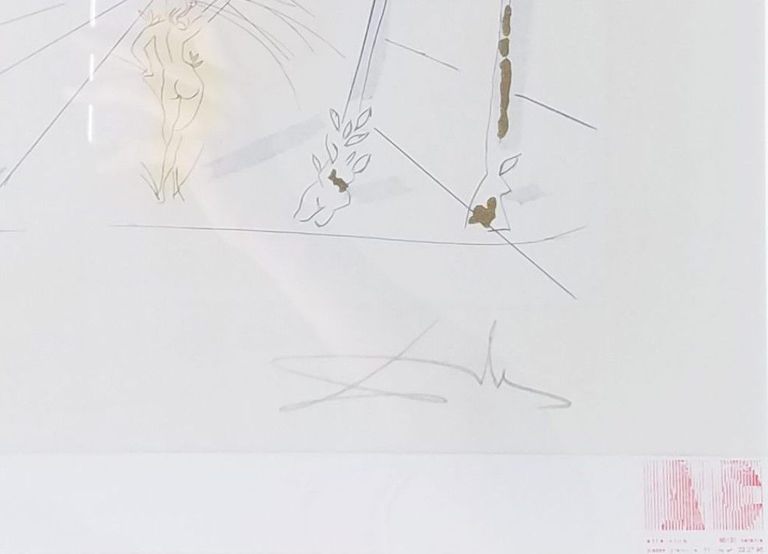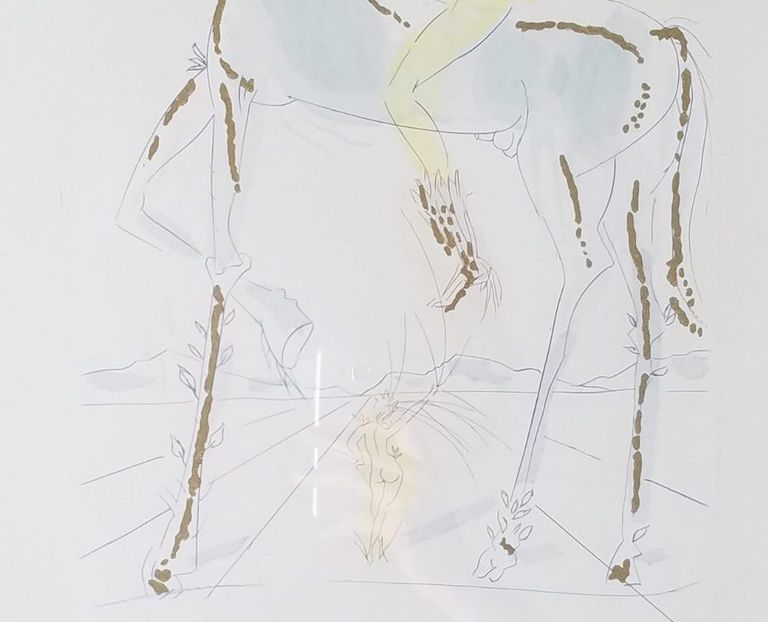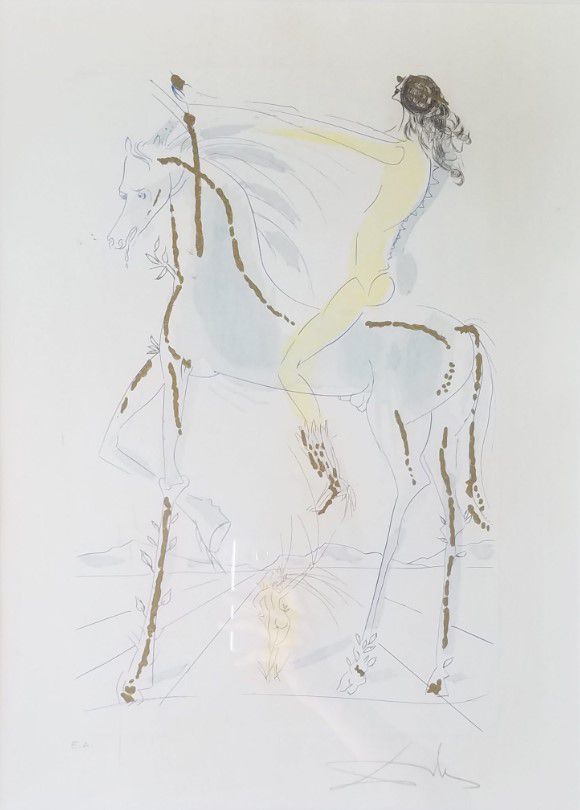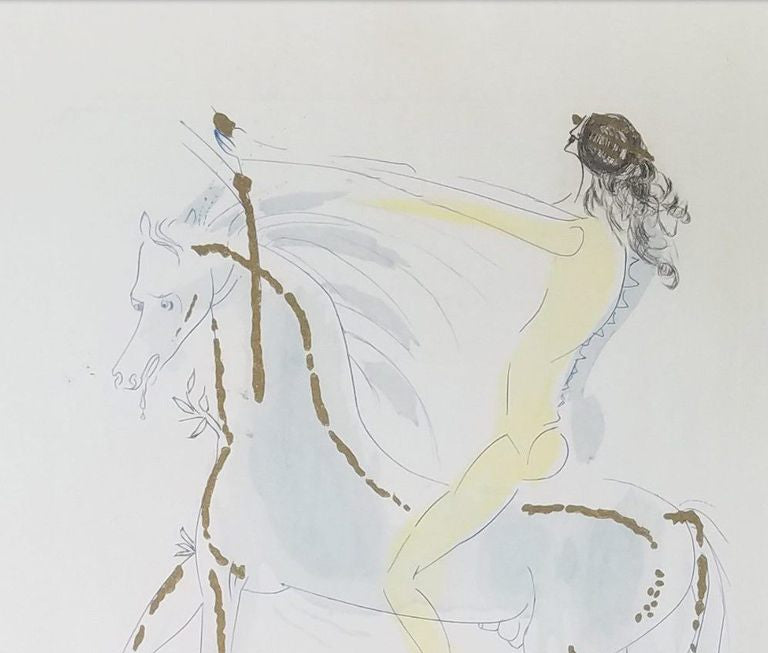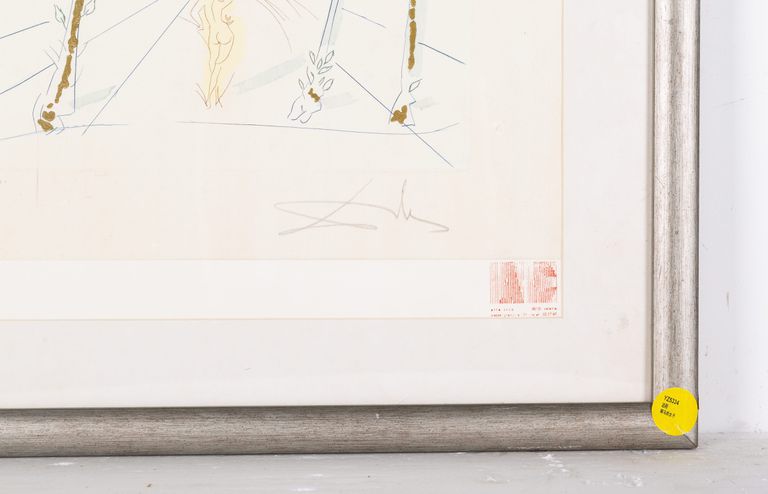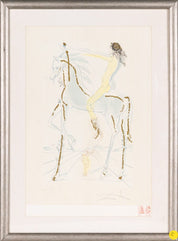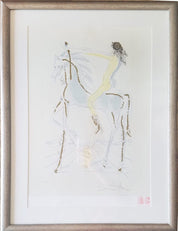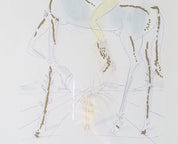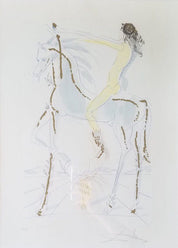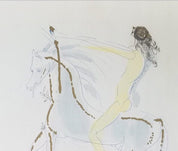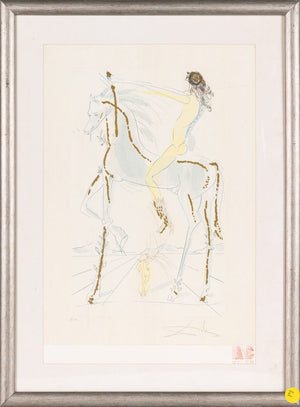Similar Items
Salvador Dali 'The Beloved is as Fair as a Company of Horses - Etching'
$2,000.00 USD
Artist: After Salvador Dalí
Title: Woman riding a horse
Medium: Etching
Edition: Artist Proof (Epreuve d'artiste)
Dimensions:15.75 x 11.81 inches (40 x 30 cm)
Condition Report: Good.
Signed: Lower right.
Description: This captivating etching, created in 1971 after Salvador Dalí, depicts a woman riding a horse. The artwork showcases Dalí's surrealistic style, combining dreamlike elements with meticulous detail. The composition evokes a sense of elegance and mystique as the woman gracefully interacts with the majestic horse. The etching technique used highlights the intricacies of the scene, enhancing the overall visual impact. With the title "The Beloved is as Fair as a Company of Horses," the artwork invites viewers to interpret its symbolic and poetic meaning.
Salvador Dalí was a renowned Spanish Surrealist painter and printmaker known for his exploration of subconscious imagery. Born on May 11, 1904, in Figueras, Spain, he developed a mature artistic style influenced by his discovery of Sigmund Freud's writings on subconscious imagery and his association with the Paris Surrealists, a group that sought to emphasize the importance of the human subconscious over rationality. Dalí's approach involved inducing hallucinatory states in himself, a process he referred to as "paranoiac critical."
Between 1929 and 1937, Dalí produced the paintings that made him one of the world's most recognized Surrealist artists. His works depicted dreamlike scenes where ordinary objects were transformed, juxtaposed, and metamorphosed in unconventional and irrational ways. Dalí's meticulous attention to detail and his unique portrayal of objects within sunlit landscapes contributed to the enigmatic nature of his art. "The Persistence of Memory" (1931), featuring melting watches in a serene setting, is one of his most famous works. Dalí also collaborated with Spanish director Luis Buñuel on Surrealistic films like "Un Chien andalou" (1929; An Andalusian Dog) and "L'Âge d'or" (1930; The Golden Age).
In the late 1930s, Dalí shifted his painting style toward a more academic approach influenced by the Renaissance painter Raphael. His ambiguous political views during the rise of fascism led to his expulsion from the Surrealist group. He spent time in the United States from 1940 to 1955, engaging in various creative projects and self-promotional endeavors. During the 1950s to 1970s, he explored religious themes and continued to depict subjects such as childhood memories and his wife, Gala. While technically accomplished, his later works are often considered less acclaimed than his earlier creations.
One of Dalí's revealing books is "The Secret Life of Salvador Dalí" (1942), which offers insights into his thoughts and experiences. The artwork titled "Woman riding a horse" is an etching created after Salvador Dalí's style and bears his influence. It is marked as an artist proof (Epreuve d'artiste) and is signed in the lower right corner. The piece's dimensions are 40 x 30 cm.
Title: Woman riding a horse
Medium: Etching
Edition: Artist Proof (Epreuve d'artiste)
Dimensions:15.75 x 11.81 inches (40 x 30 cm)
Condition Report: Good.
Signed: Lower right.
Description: This captivating etching, created in 1971 after Salvador Dalí, depicts a woman riding a horse. The artwork showcases Dalí's surrealistic style, combining dreamlike elements with meticulous detail. The composition evokes a sense of elegance and mystique as the woman gracefully interacts with the majestic horse. The etching technique used highlights the intricacies of the scene, enhancing the overall visual impact. With the title "The Beloved is as Fair as a Company of Horses," the artwork invites viewers to interpret its symbolic and poetic meaning.
Salvador Dalí was a renowned Spanish Surrealist painter and printmaker known for his exploration of subconscious imagery. Born on May 11, 1904, in Figueras, Spain, he developed a mature artistic style influenced by his discovery of Sigmund Freud's writings on subconscious imagery and his association with the Paris Surrealists, a group that sought to emphasize the importance of the human subconscious over rationality. Dalí's approach involved inducing hallucinatory states in himself, a process he referred to as "paranoiac critical."
Between 1929 and 1937, Dalí produced the paintings that made him one of the world's most recognized Surrealist artists. His works depicted dreamlike scenes where ordinary objects were transformed, juxtaposed, and metamorphosed in unconventional and irrational ways. Dalí's meticulous attention to detail and his unique portrayal of objects within sunlit landscapes contributed to the enigmatic nature of his art. "The Persistence of Memory" (1931), featuring melting watches in a serene setting, is one of his most famous works. Dalí also collaborated with Spanish director Luis Buñuel on Surrealistic films like "Un Chien andalou" (1929; An Andalusian Dog) and "L'Âge d'or" (1930; The Golden Age).
In the late 1930s, Dalí shifted his painting style toward a more academic approach influenced by the Renaissance painter Raphael. His ambiguous political views during the rise of fascism led to his expulsion from the Surrealist group. He spent time in the United States from 1940 to 1955, engaging in various creative projects and self-promotional endeavors. During the 1950s to 1970s, he explored religious themes and continued to depict subjects such as childhood memories and his wife, Gala. While technically accomplished, his later works are often considered less acclaimed than his earlier creations.
One of Dalí's revealing books is "The Secret Life of Salvador Dalí" (1942), which offers insights into his thoughts and experiences. The artwork titled "Woman riding a horse" is an etching created after Salvador Dalí's style and bears his influence. It is marked as an artist proof (Epreuve d'artiste) and is signed in the lower right corner. The piece's dimensions are 40 x 30 cm.
Popular Items
































